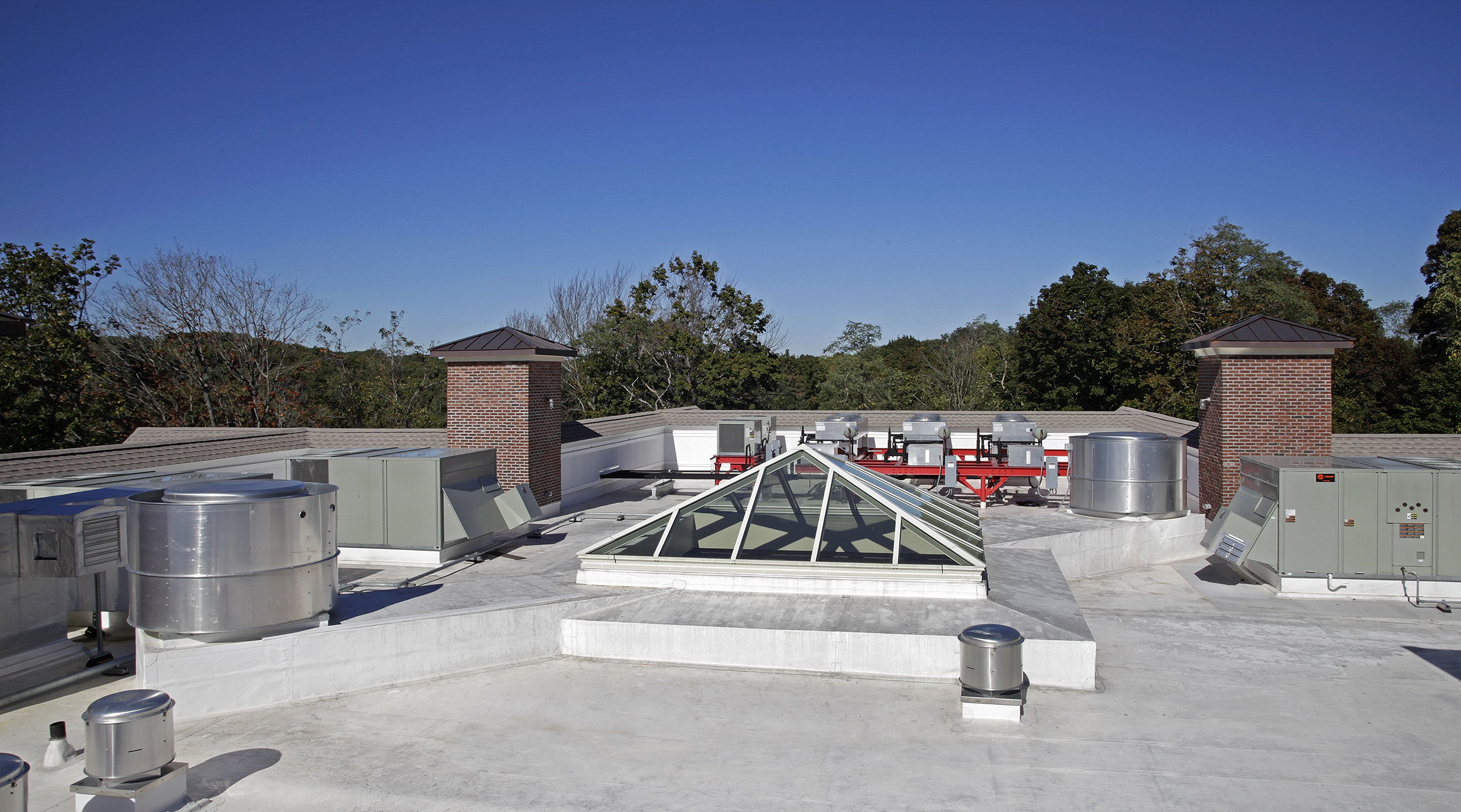If the roof of your warehouse is not white, you may want to consider making a change. A white roof is proven to be better for the environment because it reduces the “Heat Island Effect” by reflecting heat back into the atmosphere.[i] If all urban, flat roofs in warm climates were white, the resulting 10% increase in global reflectivity would offset the warming effect of 24 Gigatons of greenhouse gas emissions, or equivalent to taking 300 million cars off the road for 20 years. [ii]
White roofs are also more cost-effective for building operations because the roof is one of the primary sources of heat inside a building. A white roof will reflect over 80% of the sun’s ultraviolet rays and heat from the roof, which can help lower the inside temperature and help to reduce cooling costs. TRITEC Asset Management’s Director of Property Management, Bob Taliana, discusses the decision to have a white roof installed on 45 Gilpin Avenue, a 172,000 sq. ft. industrial building in the Hauppauge Industrial Park. “The nonair-conditioned warehouse temperature remains in the 70s on the hottest days of the summer, and rooftop units are more efficient because the units use cooler air than if the units serving the air-conditioned space were mounted on a dark roof surface.” While owners of a white roof may pay slightly more to heat their buildings, this amount is usually insignificant compared to the cooling energy savings during the summer. However, several factors make any potential heat gain of a black roof relatively immaterial:
- Because heat rises, heat transferred to the interior of a building structure from the outside remains at the top of the structure, providing minimal heat savings.
- There are fewer hours of sunlight during the winter months when heat is required. Also, during the winter months, the sun’s angle is less direct, which also helps to minimize warming potential.
- During the winter, roofs are often covered with snow, turning them “white” and eliminating any potential black roof heat gain.
California’s Lawrence Berkeley National Laboratory researchers compared the costs of white, green, and black roofs over 50 years. They found that white roofs cost $9 per square foot less than green roofs and more than $2 per square foot less than black roofs.[iii] Research done on the degradation of roofing membranes over a number of years has shown that heat from the sun is one of the most potent factors affecting durability. High temperatures and large variations, seasonally or daily, at the roofing level are detrimental to the longevity of roof membranes. Reducing the extremes of temperature change will reduce the incidence of damage to membrane systems. A white roof will minimize damage caused by u/v and heat degradation, where a black roof surface absorbs nearly 85% of ultraviolet and infrared radiation.
Mark Giugliano, President of F&F Roofing in Floral Park, was asked about installing and maintaining a white roof vs. a traditional black roof. “Most white roofs are “heat weldable,” meaning all seams are hot-air welded, making them extremely strong, durable, and reliable. There are very economical ways to install these roofs, such as mechanically attached and Rhino-Bond. Both applications require very little adhesives and are very easy to install, making them much cheaper than installing a conventional 20-year asphalt or EPDM roof. White roofs are energy star rated, and many municipalities offer rebates to install a white roof, sometimes as much as $0.20 a square foot.” Mark also noted that “White roofs can be very slippery, especially when wet or covered in frost. They also need to be cleaned to maximize the reflective properties. Cleaning the roof needs to be done more frequently the closer you get to a more urban setting.”
So when considering your next roof or the location of your next warehouse, don’t just ask for the roof’s age; make sure you know the roof color.
[i] [i] Mark Z. Jacobson and John E. Ten Hoeve, 2012: Effects of urban surfaces and white roofs on global and regional climate. J. Climate, 25, 1028–1044.
DOI: http://dx.doi.org/10.1175/JCLI-D-11-00032.1
[ii] California Energy Commission (2005). Residential Compliance Manual For California’s 2005 Energy Efficiency Standards (PDF). Sacramento, CA: California Energy Commission.
[iii] White, Green or Black Roofs? Berkeley Lab Report Compares Economic Payoffs | Berkeley Lab. (2014, January 21).

